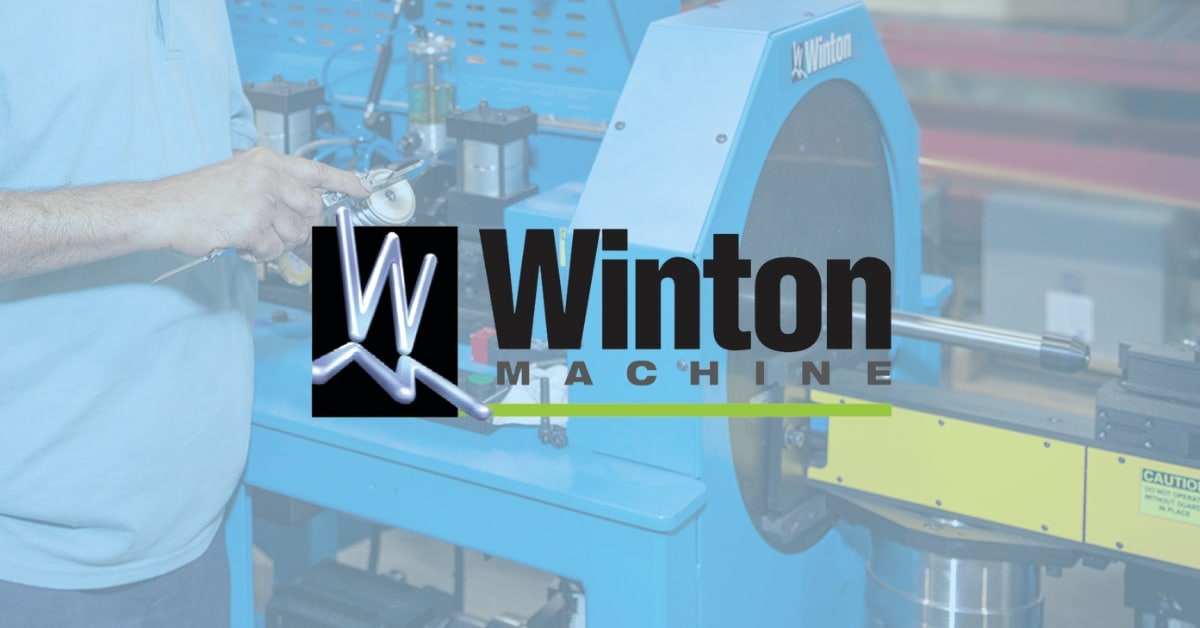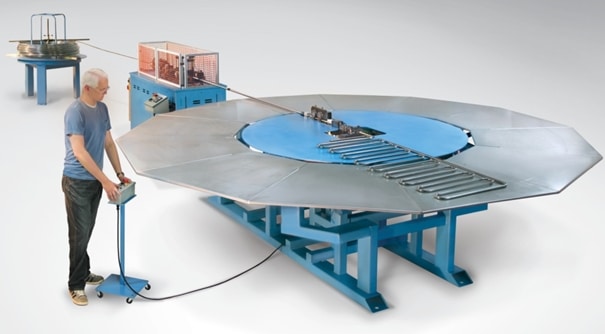How To Reduce Operating Costs When Bending Steel Serpentine Profiles
A Bit of History
In the world of heat transfer there is often a need to bend a tube in the shape of a serpentine. This happens worldwide every month consuming tons of aluminum, copper, steel, and stainless steel tubing. From a manufacturing viewpoint, bending copper in the 21st century into a serpentine shape is readily accomplished by pulling the tubing form a bulk spook (Level Wound Coils). The refrigeration industry that uses LWC has been making use of bulk spools since about the late 1960’s Nevertheless, the market for forming long lengths of steel or stainless steel into a serpentine profile from LWC continues to expand.
When a long steel serpentine profile was developed 30± years ago, it was most likely developed from joining straight lengths of tubing together. In general, a long serpentine is anywhere from 5 feet to 25 feet between bends. Depending on the mill, these short straight lengths would come in as 12’ to 40’ straight lengths. These individual sticks of tube would then be bent into a serpentine profile and then joined together as one large serpentine assembly most often using a butt welding process. The tubes would then go thru a pressurized leak test to verify the quality of the welded butt joints. With just one pin hole, the welder would be called over to eliminate the defect. The process would continue until the welded assembly was leak free.
Another approach to forming a long serpentine would be to firstly chamfer the ends of all the straight lengths, butt weld the necessary ends together, grind down the butt welds flush with the OD of the tube and then bend the 100+ feet of tubing into the needed serpentine profile. This approach did consume some floor space.
Using either of the above approaches involves significant labor not to mention the exposure to warranty costs of the welded butt joints after the product was out in the field.
LWC of Steel Meets CNC Serpentine Bender
This is where a LWC of steel/stainless steel tubing meets up with a modern CNC serpentine bender. Right out of the gate, the process eliminates the need to butt weld all those straight lengths together; the saving continue. Think about the inbound shipping costs associated with all those long lengths of straight tubes. That is replaced with several thousand feet of coiled steel tubing shipped in on a skid. Then, history shows that the cost of steel or stainless steel tubing when purchased in bulk can reduce the costs of the tubing per foot; this added immediately to the bottom line. It gets even better. Now the warranty costs have to drop as well.
A serpentine bender is designed to help facilities the material handling of the serpentine profile as the profile is being formed. From a manufacturing view point, a CNC serpentine bender can bend CW and CCW without the need to rotate the bent part between bends (plane rotation). This allows the serpentine profile to remain in contact with the large surrounding support table thus making it easier on the operator. By eliminating the need to rotate/flip the part back and forth between bends, this can have a positive effect on reducing work place injury.

George Winton, P.E. designs and builds CNC tube fabrication equipment for Winton Machine in Suwanee, GA. He can be reached at gwinton@wintonmachine.com or 888.321.1499.
About the Machines We Build
All of our semi-rigid coax and tube fabrication machines at Winton are designed, manufactured, and tested in-house. We have a large line of standard products as well as the ability to engineer the best solution for our customer’s needs. Our experienced sales staff makes sure that our customers can justify their capital equipment investment by offering a solution that is exactly what they need in order to manufacture their parts. Please contact us today to discuss your project.



